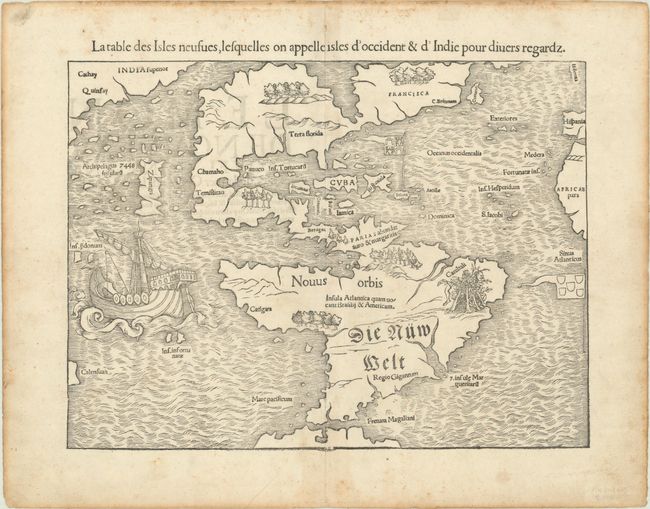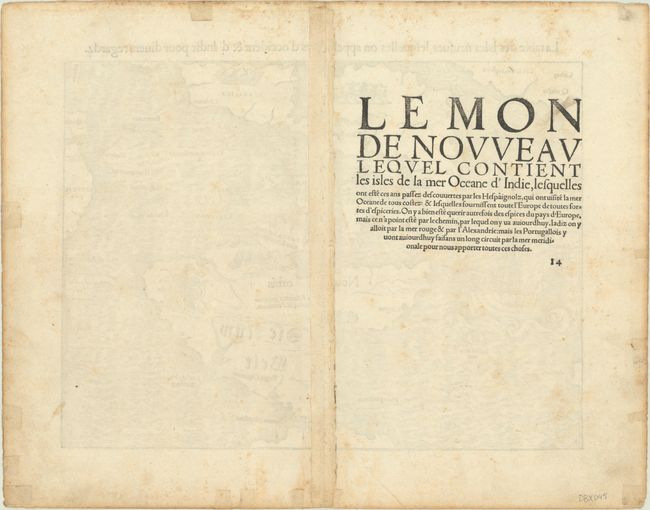Catalog Archive


Auction 195, Lot 73
One of the Most Important 16th Century Maps of the New World
"La Table des Isles Neufues, Lesquelles on Appelle Isles d'Occident & d'Indie pour Divers Regardz ", Munster, Sebastian
Subject: Western Hemisphere - America
Period: 1552 (published)
Publication: La Cosmographie Universelle
Color: Black & White
Size:
13.7 x 10.1 inches
34.8 x 25.7 cm
Download High Resolution Image
(or just click on image to launch the Zoom viewer)
(or just click on image to launch the Zoom viewer)

